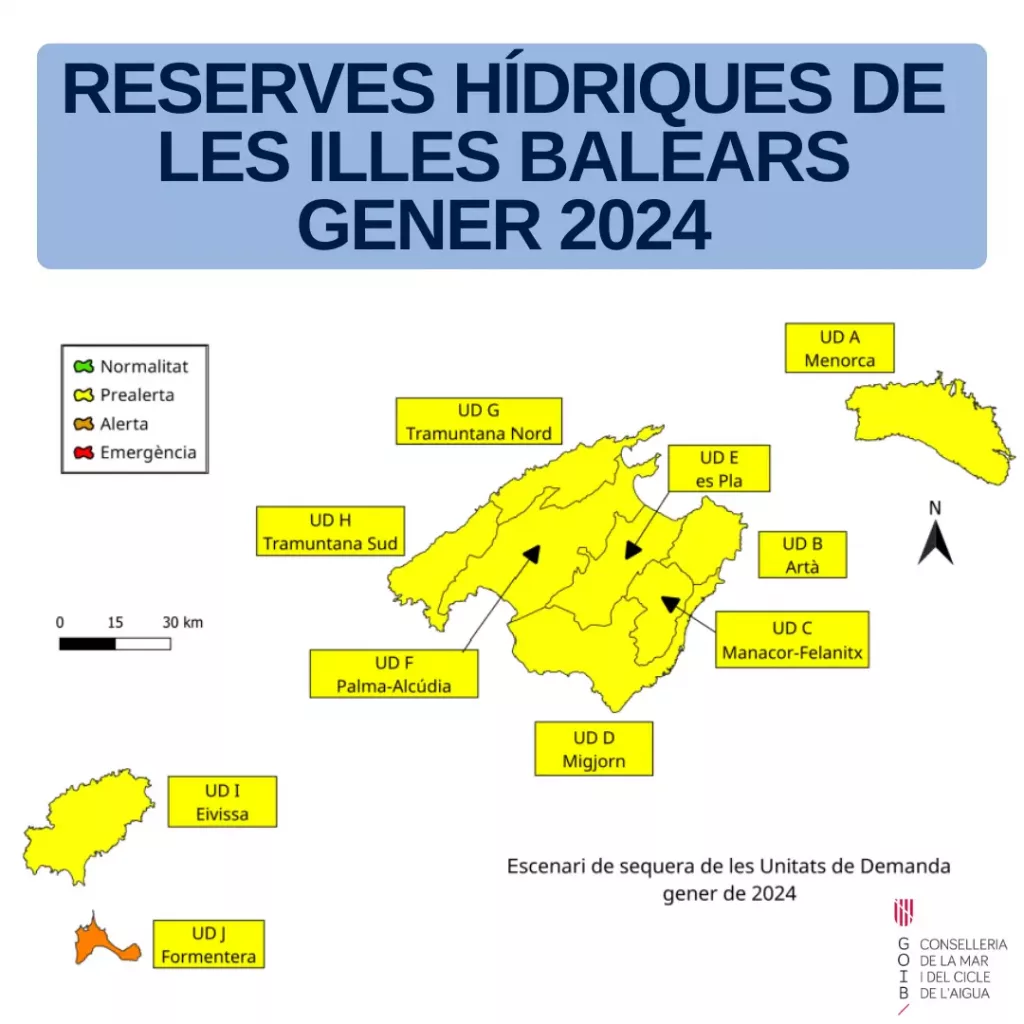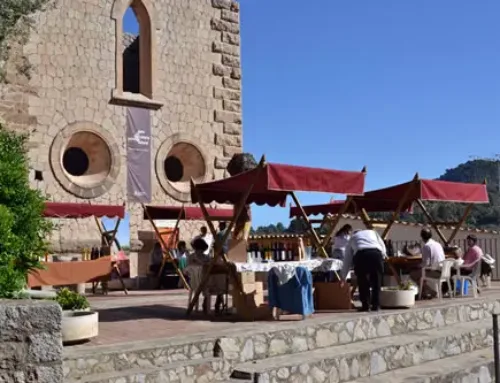Water reserves in the Balearic Islands increased slightly during the month of January, from 53% to 54%. By islands, Mallorca has recorded an increase in its reserves from 54% to 56%, while Menorca has experienced a reduction from 54% to 52% and Eivissa has suffered a more pronounced fall from 43% to 39%. Despite these changes in the figures by island, the overall situation of water reserves in the Balearic Islands has improved compared to the previous year, when the overall situation was 53%.
In the breakdown by demand units, a mixed picture is observed: Artà, Migjorn, Pla, Menorca, and Eivissa have experienced decreases in their reserves, contrasting with increases in Manacor-Felanitx, Palma-Alcúdia, Tramuntana Nord and Sud, and Formentera. In terms of drought alert, 91.9% of the territory is in pre-alert, while only Tramuntana Nord, which constitutes 8.1% of the territory, maintains a normal situation.
The nine Demand Units (UD) – Menorca, Artà, Manacor-Felanitx, Migjorn, es Pla, Palma-Alcúdia, Tramuntana Nord, Tramuntana Sud, and Eivissa – remain in pre-alert, and only Formentera is on alert, indicating a more critical level in its water reserves.

In January, the Balearic Islands experienced a month with more rainfall than usual, recording 66.8 litres per square metre (l/m²) and thus exceeding the historical average of 54.6 l/m². In detail, Mallorca and Menorca enjoyed wetter conditions, with rainfall of 76.1 l/m² and 68.0 l/m² respectively. In contrast, Eivissa and Formentera had less rain than usual, with 12.5 l/m² and 18.6 l/m², falling below their historical averages.
This month was also characterised by higher than expected temperatures, with an average of 12.2ºC, an anomaly of +1.7ºC compared to the norm.







Leave A Comment